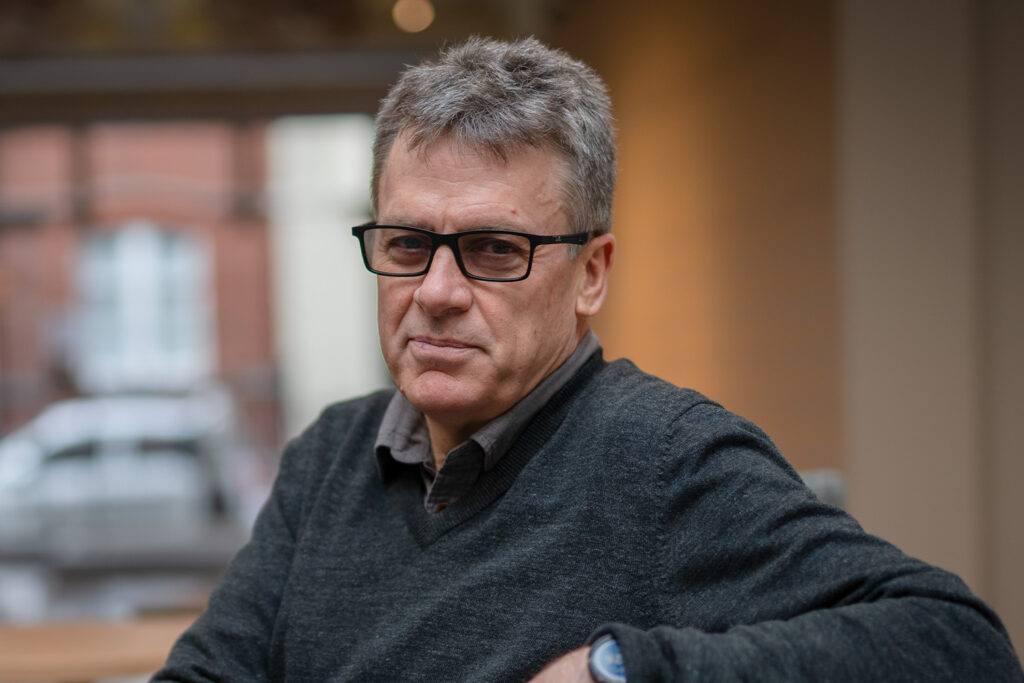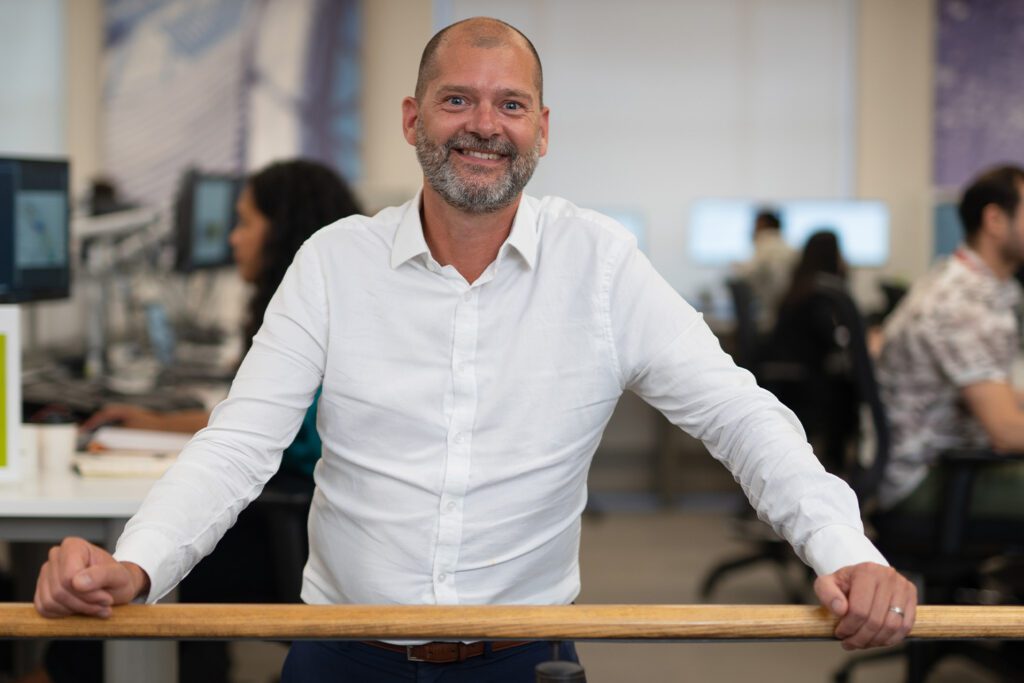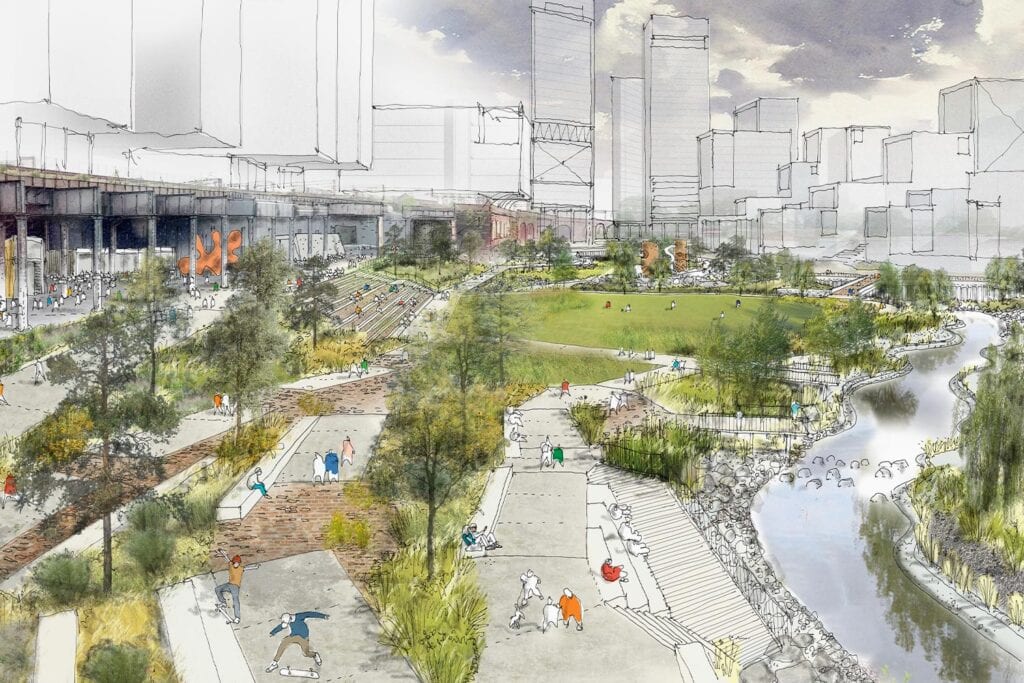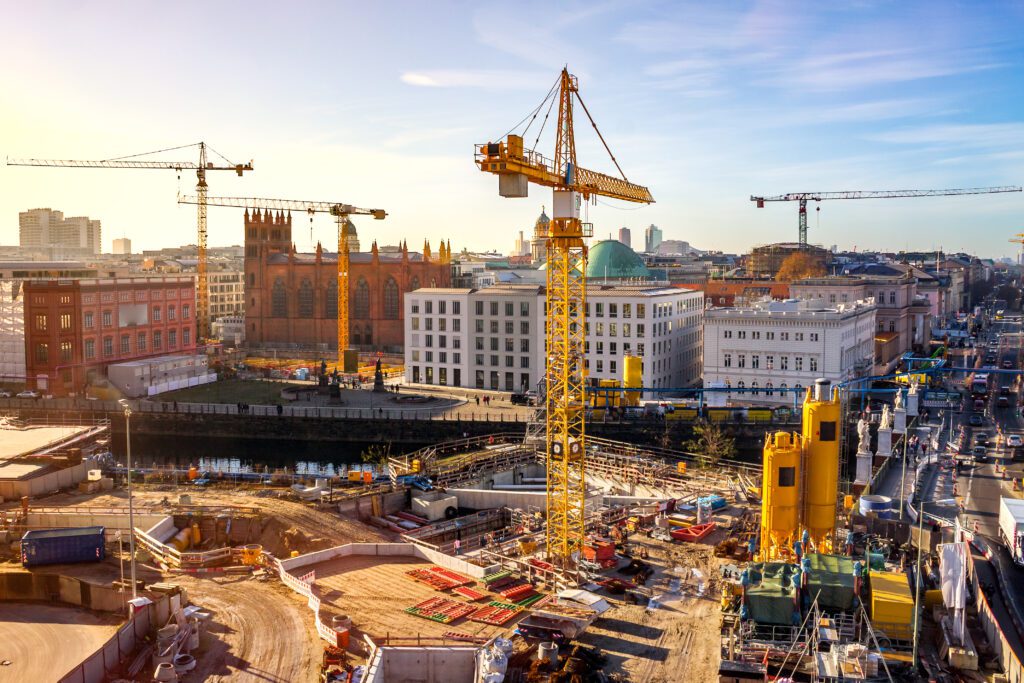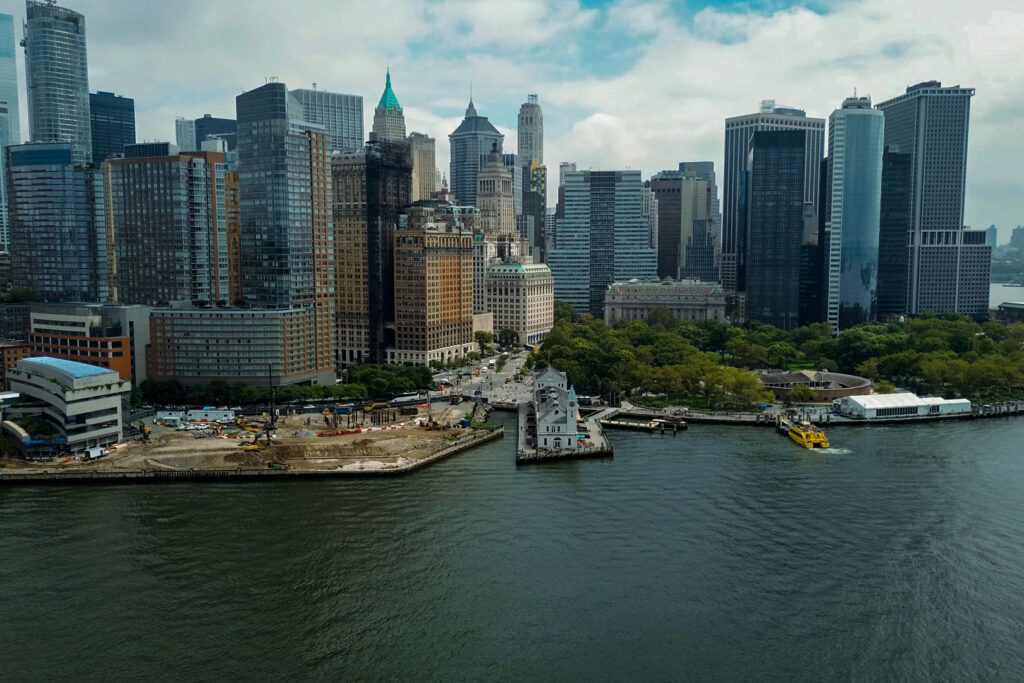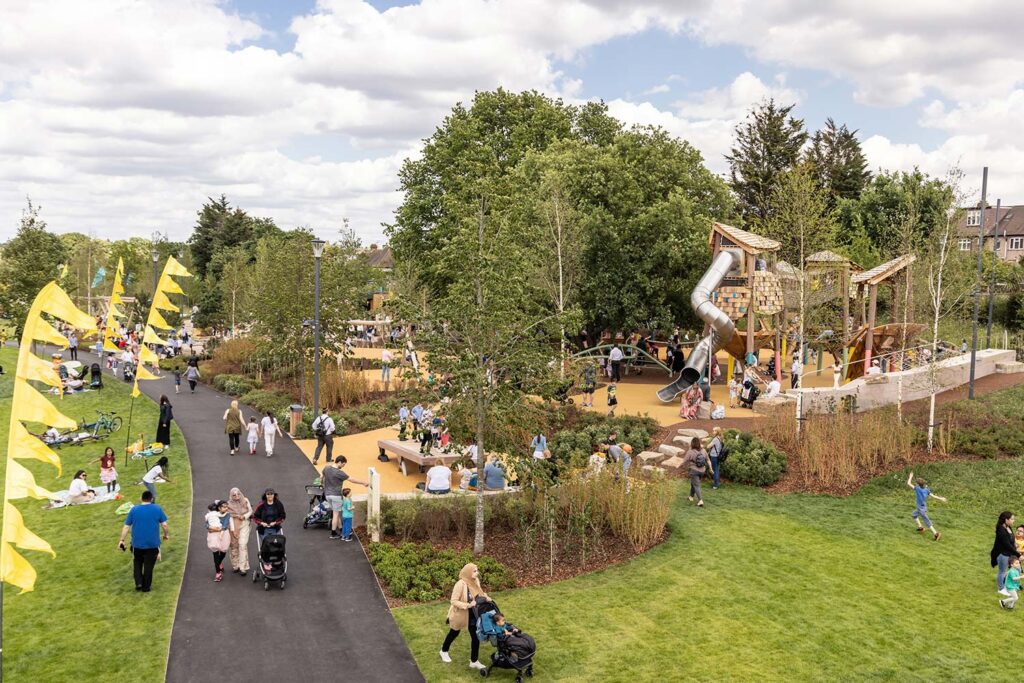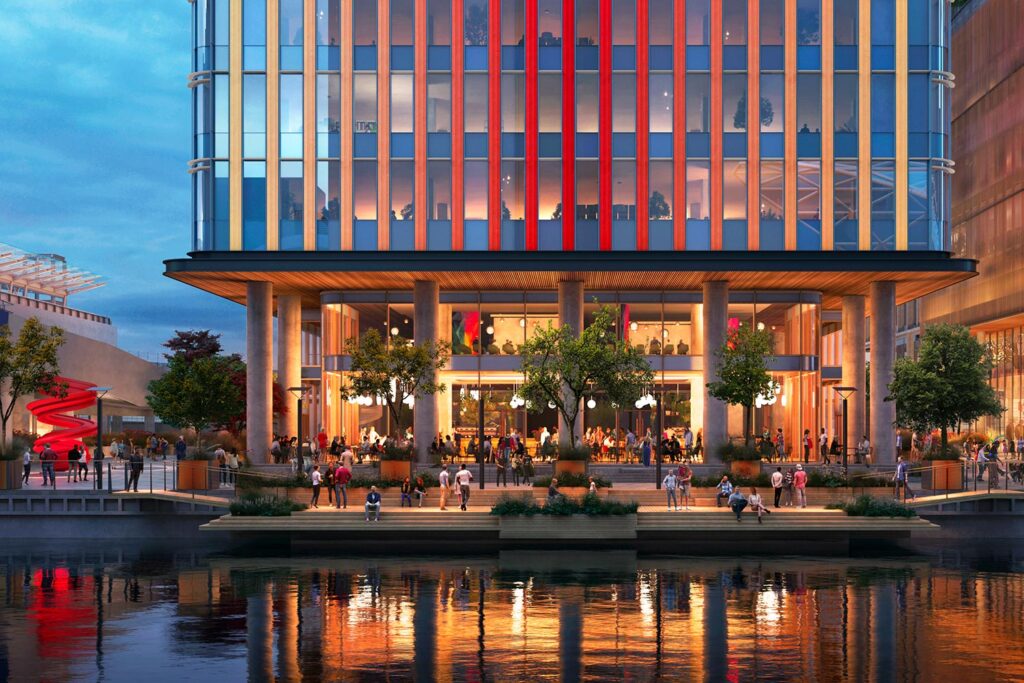
Wimbledon Park
London, UK
Project details
Client
AELTC (The All England Lawn Tennis Club Ltd)
Architect
Allies & Morrison
Collaborator
LUC (Land Use Consultants), landscape architects. Rolf Judd, planning consultants
Duration
2019 – 2030
Services provided by Buro Happold
Acoustics, Bridge engineering and civil structures, Building Services Engineering (MEP), Digital Infrastructure, Energy consulting, Environmental consultancy, Facade engineering, Fire engineering, , Ground engineering, Inclusive design, Infrastructure, Lighting design, Masterplanning, Security, Structural engineering, Sustainability, Transport and mobility, Waste management, Water
Wimbledon is one of the highlights of the British sporting year. But the historic site is relatively confined compared to many other “Grand Slam” facilities. The club behind The Championships, the All England Lawn Tennis Club (AELTC), is developing plans to maintain the world-famous event at the pinnacle of the sport, as well as providing year-round significant public benefits.
The plans look to develop the land to the east of the existing site, currently a golf course, into a series of new tennis courts integrated sensitively into the landscape. The project will see the creation of London’s first new public park since the Queen Elizabeth Olympic Park opened almost a decade ago.
Approximately 9.4-hectares (23 acres) of the site will be sensitively restored as part of the historic Grade II-listed Capability Brown landscape. Part of the site will be transformed into parkland providing year-round access to the public, significantly increasing the green space available to local communities.
Challenge
Plans for the park include the protection of veteran trees and planting of approximately 1,500 British grown new trees, the desilting and restoration of the Wimbledon Park Lake, safeguarding facilities for sailing and angling, and the creation of diverse natural habitats for a range of protected species.
A new boardwalk around the lake’s perimeter will open the space to visitors, reinstating the southern tip of the lake, de-culverting the feeder brooks and undertaking a transformational lake desilting.
A new 8,000-seater show court is planned and designed to blend into the landscape.
The project will involve sensitively reprofiling the landscape to accommodate 38 additional grass courts, whilst protecting the veteran trees and delivering biodiversity net gain. The additional courts will allow the qualifying rounds for The Championships to be held on the site and enhance the player and spectator experience.
The plans also include the creation of seven single-storey maintenance hubs, a central grounds maintenance hub, and two player hubs. Buro Happold’s security team has assessed the risks, particularly during The Championships, and designed mitigation for the Wimbledon Park site.
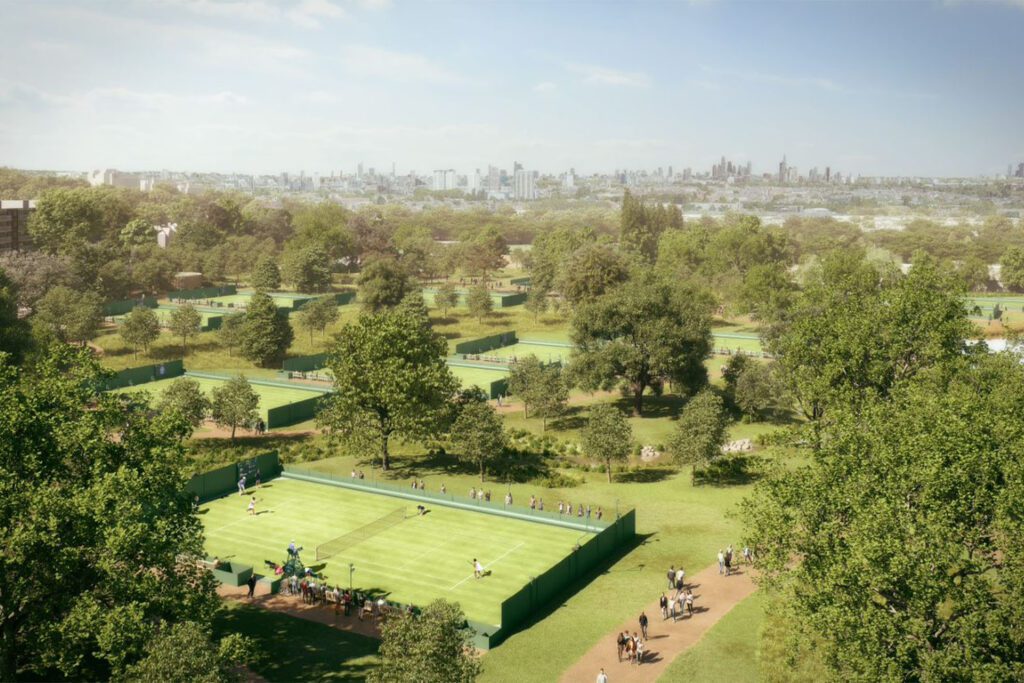
Solution
The AELTC has an ambitious sustainability strategy called “Environment Positive”. This includes reducing emissions from operations to net zero by 2030, being a resource-efficient organisation and delivering biodiversity net gain across the estate by the end of this decade. It also identifies using its platform to build climate resilience and inspire wider environmental action.
Our sustainability experts worked with the club to develop a framework of performance targets and design guidelines. We have sought to mitigate embodied carbon across design proposals within the parkland, for example in the court ring beams.
Buro Happold’s structural engineers have been working with the wider design team to create new habitats including bat roosting facilities on an island within Wimbledon Park Lake and a nesting area for house martins.
One of the greatest climate-related threats for the UK is the increase in flood risk. Our infrastructure team has developed a drainage strategy for the site that aims to mimic natural drainage, managing surface water as near to source as possible using a variety of methods to slow the flow, attenuate and infiltrate.
The reason we work with Buro Happold is because they have incredibly good people. The Buro Happold recruitment strategy is to get the best people, and it shows.
Alex Wraight, Partner, Allies & Morrison
The solution for the parkland site will use a mixture of landscaped SuDS (sustainable drainage systems) including ponds, basins, raingardens, wetlands, and also a ‘grey’ infrastructure approach.
The engineered components of the surface water system are integrated into the irrigation system to minimise the use of potable water across the site. The sustainable irrigation plan for the courts challenges where water needs to be used, harvesting rainwater and ground water from bore holes. The drive for resource efficiency also translates to sustainable plans around waste logistics, minimising earthworks and the quantities of material taken off the site.

One of the key interventions will involve replacing a series of concrete culverts with naturalised, open channels that feed into the lake. By “daylighting” the culverts in this way, the watercourse provides additional capacity, reducing the risk of flooding and adding resilience against climate change, whilst rehabilitating the environmental value of the watercourse.
Our water team has worked closely with the landscape architect and other stakeholders to create a naturalised, ‘soft’ engineered design that is sympathetic with the historic landscape setting. This includes using vegetation and planting to provide protection to the channel bank slopes while minimising impact on existing protected veteran tree root zones, proposed utilities and the new courts.
A significant desilting of the lake will also take place, restoring it to its former glory, and creating more opportunities for biodiversity to flourish.
Under the AELTC Wimbledon Park Project plan, the local area will also benefit from improved infrastructure and transport links, including upgrades to Church Road, creating opportunities to encourage active travel and micromobility, and improvements to local public transport services.
Our energy team has supported the client to devise a strategy built around renewable energy, which will include an ambitious, but unobtrusive, closed-loop ground-source heat pump network. This will incorporate a series of bore holes that use the ground as a low-carbon heat source, connected to a new energy centre, which will feed into all the existing buildings and courts.
The club plans to move away entirely from gas-fired heating, achieving significant carbon benefits. The new system is designed to offer energy resilience, especially during the busy grass court season.

Value
Our multidisciplinary team is supporting the client in the realisation of this transformational project, which is currently going through the planning process. The earliest construction work is expected to begin in late 2022. The final element, the completion of the new show court, is expected by 2030.
The AELTC also plans further growth of community initiatives such as the Wimbledon Junior Tennis Initiative (WJTI) and the AELTC Community Tennis Centre at Raynes Park, and the work of the Wimbledon Foundation in Merton and Wandsworth. The Wimbledon Park Project represents a significant opportunity for the club to accelerate its actions toward its 2030 Environment Positive commitments.
The sustainability aspect of their work is now much more fundamental, the foundation of all their decisions, and more overt than before.
Alex Wraight, Partner, Allies & Morrison




